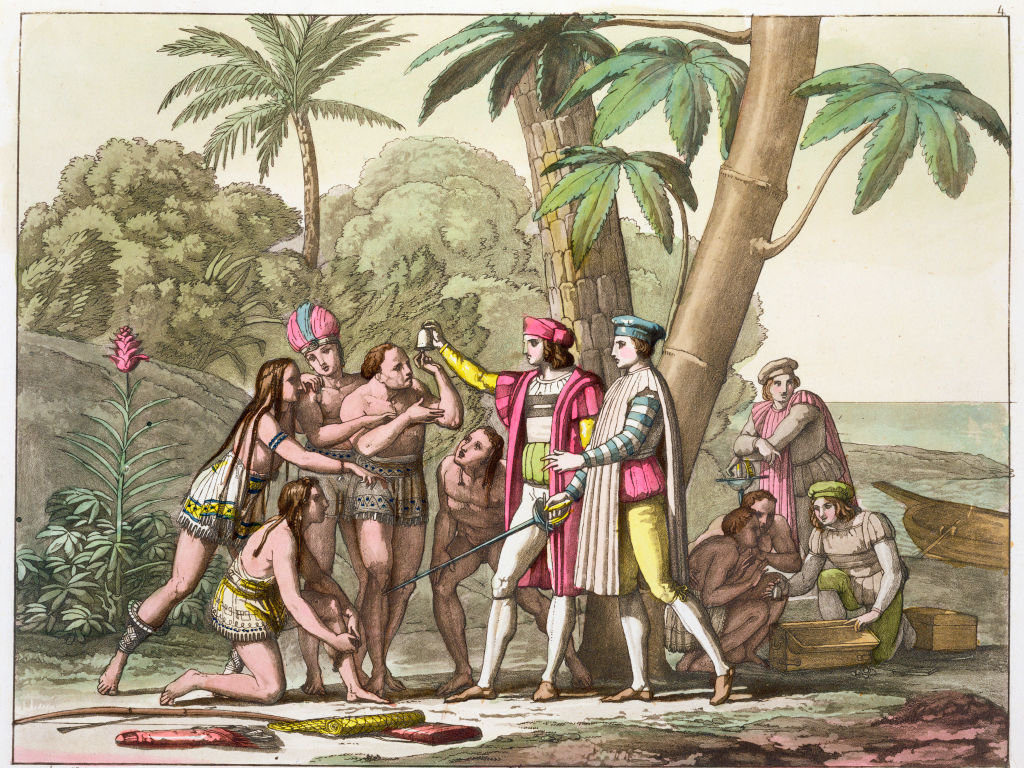Centering Native History

The 1619 Project is a great thing. The reactions to it by the right were totally over the top, which was elucidating and useful. Helps when you have the right enemies. Anyway, I have no criticism of it all, except to just make a comment, which is that Native history continues to be completely isolated in our discussions of the past, including on the left. I would argue that you simply can’t understand American race without centering the experience of Native Americans, but far too often, our racial history and racial present gets reduced to black and white. That’s a problem. Slavery was not a specifically African phenomenon. Not only were there lots of Native slaves in the United States, but from the perspective of Europeans, it barely mattered whether the slaves were Native or African. The point of colonization from New York to Argentina was to force people of color to labor for free. There were specific historical and demographic reasons why that eventually trended to Africans, but we still don’t get the complete picture without including Native people. Thus, I was very glad to see Andrés Reséndez be included in this broader discussion on what histories of slavery are still being left out of American classrooms.
Between 2.5 million and 5 million Native Americans were enslaved throughout the Western Hemisphere in the centuries between the arrival of Columbus and the late 19th century, when the system declined markedly (but did not disappear entirely). In contrast to the enslavement of Africans, which included a large percentage of adult males, the majority of enslaved Native Americans were women and children.
In Colonial times, the Carolinas were a major Indian slaving ground. New Englanders captured rebellious Indians and shipped them to work on plantations in the Caribbean. And French colonists in eastern Canada took thousands of Indians captive from the interior around the Great Lakes region.
During the 18th and early 19th centuries, however, the traffic of Native Americans on the Eastern Seaboard was replaced and overshadowed almost entirely by Africans. Not surprisingly, Americans living east of the Mississippi River lost awareness of earlier forms of Native American bondage. When they spoke or wrote about slavery in the 19th century, they invariably meant African slavery.
Yet Indian slavery continued to thrive in the West and even expanded during the tumultuous 19th century. The best evidence comes from letters and diaries of westbound Americans.
California may have entered the United States as a “free-soil” state, but American settlers soon discovered that the buying and selling of Indians had long been a common occurrence in the Golden State. As early as 1846, the first American commander of San Francisco acknowledged that “certain persons have been and still are imprisoning and holding to service Indians against their will” and warned that “the Indian population must not be regarded in the light of slaves.”
James S. Calhoun had never set foot in New Mexico until he was appointed Indian agent in Santa Fe in April 1849. Calhoun had grown up in the South and did not expect to find slavery in New Mexico. As Indian agent, however, he became amazed by the segmentation of the Indian slave market. “The value of the captives depends upon age, sex, beauty, and usefulness,” Calhoun wrote, “good looking females, not having passed the ‘sear and yellow leaf’ are valued from $50 to $150 each; males, as they may be useful, one-half less, never more.”
The Spanish Crown forbade Indian slavery as early as 1542, the Mexican republic granted citizenship rights to all Natives born within the country in the 1820s, and the U.S. Congress passed the 13th Amendment prohibiting both “slavery” and “involuntary servitude,” a formulation that opened the possibility of liberation of all Native Americans held in bondage. Yet Indian slavery persisted.
One of the most striking aspects of this other slavery is that, because it had no legal basis, it was extremely difficult to extinguish. Forms of Indian slavery continued in the United States and elsewhere in the hemisphere through the end of the 19th century and in remote areas, even later. Disguised as debt peonage or penal service, this other slavery — invisible and often posing as legal work — is the direct forerunner of the types of slavery practiced today.
According to the latest estimate of the Walk Free Foundation, an international human rights organization based in Australia, 40 million people in 167 countries live in some form of “modern-day” slavery. It is forbidden all over the world, yet not a single region of our globe has been spared from this scourge. Slavery continues to thrive because its beneficiaries resort to legal subterfuge to compel people to work, under the threat of violence, and offering absurdly low or no compensation.
The 400-year experience of Native Americans with this other slavery makes clear there is nothing new about this.
Moreover, there were slave raids against Native people in California–by people who had supported the Union in the Civil War–well into the 1870s.
This history is as central a part in the development of the United States’ economy and society as the stories of African slavery and simply must be centered more directly in our stories about the past.


